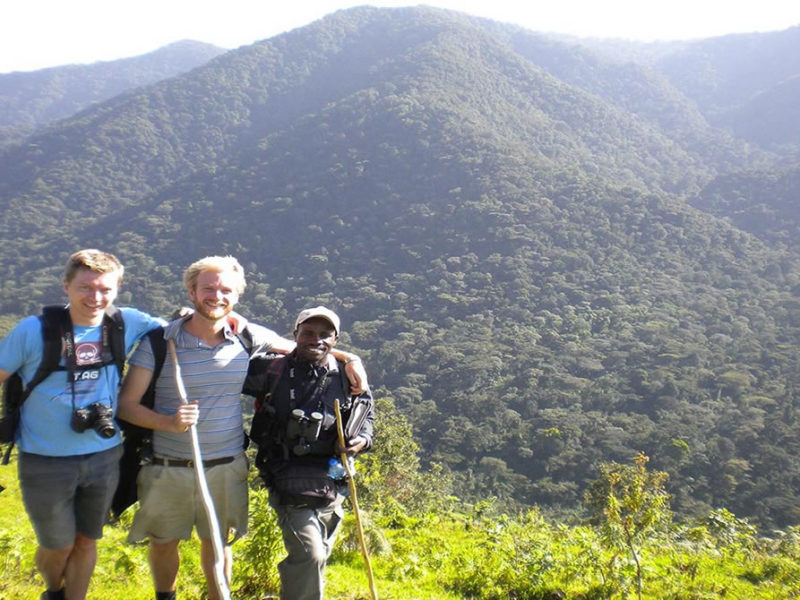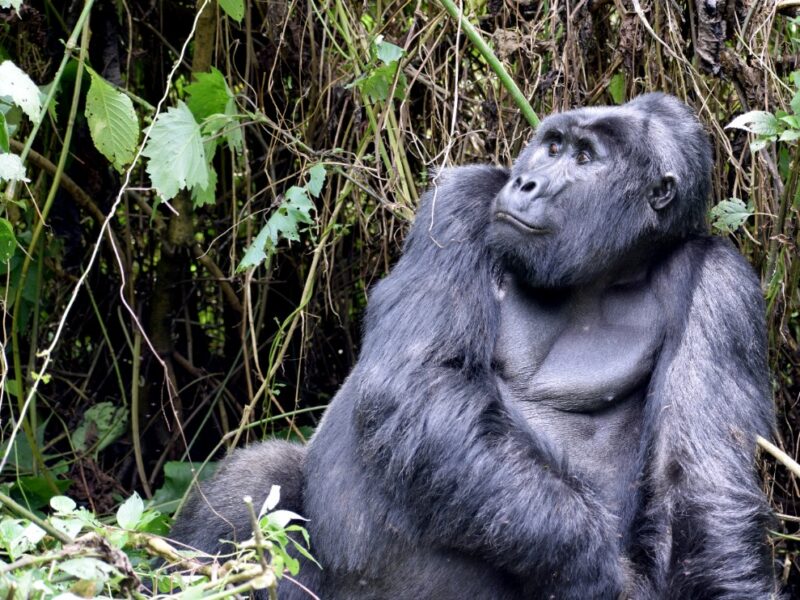The Local Tribes and Culture in East Africa
East Africa is a vibrant region rich in life, color, tradition, and narratives. A particularly remarkable aspect of this area is its diverse population. The inhabitants of East Africa belong to various tribes and cultures, each characterized by its distinct lifestyle. These cultural differences are reflected in their attire, cuisine, languages, dances, and belief systems.
If you intend to visit East Africa, familiarizing yourself with the local tribes and cultures will enhance your understanding of the region. This knowledge will enrich your travel experience, foster respect for the local people, and facilitate the formation of meaningful relationships. This guide will provide insights into some of the most prominent tribes in East Africa, their customs, and the unique attributes that define them.
The Maasai (Kenya and Tanzania)
The Maasai are among the most renowned tribes in East Africa, residing in southern Kenya and northern Tanzania. They are distinguished by their vibrant attire, tall stature, energetic jumping dances, and rich cultural traditions.
Culture: The Maasai reside in small settlements known as ‘manyattas,’ which consist of huts constructed from mud and cow dung. Cattle hold significant value for them, as they regard cows as a divine blessing. A man’s wealth is often measured by the number of cows he possesses.
Clothing: The Maasai community is known for their distinctive red shukas (robes) and intricately designed beaded jewelry. Both men and women adorn themselves with earrings and necklaces crafted from vibrant beads.
Ceremonies: The Maasai conduct unique ceremonies to mark the transition of boys into manhood, to celebrate marriages, and to honor the bravery of warriors (morans).
Numerous tourists travel to Maasai villages to gain insight into their culture, where they are greeted with traditional songs, dances, and narratives.
The Baganda (Uganda)
The Baganda represent the most populous ethnic group in Uganda, primarily residing in the central region, which encompasses the capital city, Kampala. Their kingdom is referred to as Buganda, and the title of their monarch is Kabaka.
Culture: The Baganda hold their royal family in high esteem. The Kabaka represents a symbol of unity and tradition. The populace communicates in Luganda, which is among the most widely spoken languages in Uganda.
Clothing: Women don a traditional garment known as a ‘gomesi’ accompanied by a sash, whereas men are attired in a kanzu.
Traditional Sites: The Kasubi Tombs, the burial site of Baganda kings, is a significant cultural landmark and recognized as a UNESCO World Heritage Site.
Additionally, the Baganda culture is enriched by its vibrant music, where drums play a crucial role in both dance and storytelling.
The Chaga (Tanzania)
The Chaga community resides on the slopes of Mount Kilimanjaro in northern Tanzania, recognized for their robust agricultural practices and profound reverence for the land.
Culture: The Chaga cultivate bananas, coffee, and maize, utilizing an ancient underground irrigation system for watering their fields, a technique that has been inherited through generations.
Traditional Beliefs: While a significant number have embraced Christianity, they continue to honor their traditional ancestors and spirits. Certain households maintain sacred spaces for making offerings. The primary language spoken is Kichaga, although many individuals are also proficient in Swahili.
The Chaga have significantly influenced education and politics in Tanzania.
The Luo (Kenya, Uganda, Tanzania, South Sudan)
The Luo community resides in proximity to Lake Victoria, primarily in the western region of Kenya, northern Tanzania, and eastern Uganda. They are recognized for their rich musical heritage, storytelling practices, and fishing customs.
Culture: Historically, the Luo people have engaged in fishing and agriculture. They are characterized by extensive family networks and a profound reverence for their elders.
Music and Language: Luo music is renowned, particularly the Benga genre from Kenya. The speakers of this music communicate in Dholuo, a language characterized by its melodic intonations.
Notable Figures: Barack Obama, the former President of the United States, has ancestral ties to the Luo community.
Traveling to the Luo region provides visitors with the opportunity to experience music festivals, engage in lake fishing, and witness cultural performances.
The Hutu, Tutsi, and Twa (Rwanda and Burundi)
Rwanda and Burundi are inhabited by three primary ethnic groups: the Hutu, Tutsi, and Twa.
Hutu: Historically, farmers represent the largest demographic in both nations.
Tutsi: Traditionally, cattle herders and the elite class during the era of monarchy.
Twa: A modest community of individuals residing in the forest, frequently recognized for their craftsmanship in pottery and their musical talents.
In the aftermath of the 1994 genocide in Rwanda, the nation has made significant efforts to foster unity, encouraging all Rwandans to identify as a single community, transcending ethnic divisions.
Cultural activities in Rwanda and Burundi feature Intore dance, royal drumming, and traditional narrative art.
The Hadza (Tanzania)
The Hadza community resides in proximity to Lake Eyasi in northern Tanzania and is recognized as one of the few remaining hunter-gatherer tribes globally.
Lifestyle: Their sustenance is derived from hunting wildlife and foraging for fruits and roots. They frequently relocate and do not engage in agriculture or animal husbandry.
Language: They communicate using a click language, similar to those found in southern Africa.
Culture: The Hadza’s lifestyle has remained largely unchanged for millennia, characterized by small communal groups that practice equitable sharing.
Visitors have the opportunity to observe the Hadza, gaining insights into the potential lifestyles of early humans, which offers valuable lessons in survival, nature, and simplicity.
The Swahili People (Kenya and Tanzania Coast)
The Swahili community resides along the eastern coast of Africa, particularly in Mombasa, Lamu, and Zanzibar. Their cultural heritage is a blend of African, Arab, and Indian influences, shaped by centuries of trade across the Indian Ocean.
Language: They communicate in Kiswahili, a language that is among the most commonly spoken in East Africa.
Religion: Most Swahili people are Muslim.
Culture: The cuisine features a variety of spices, rice, and coconut. Music and poetry hold significant cultural value, particularly the Taarab genre.
Tourists take pleasure in exploring Stone Town, admiring the historic Swahili architecture, and participating in festivals such as Mwaka Kogwa in Zanzibar.
The Turkana (Kenya)
The Turkana community resides in the arid northwestern area of Kenya. They are a nomadic group that relies on camels, goats, and cattle for their sustenance.
Culture: They adorn themselves with vibrant beads and leather garments. Their hairstyles and body embellishments are distinctive and aesthetically pleasing.
Livelihood: Water and grazing land are essential. Numerous individuals continue to track the movement of their livestock.
Lake Turkana: This region is inhabited by the Turkana people and is renowned for its numerous archaeological sites, including the well-known Turkana Boy fossil.
Additionally, the Turkana Cultural Festival takes place annually, drawing visitors from across the globe.
The Batwa (Uganda, Rwanda, DR Congo)
The Batwa are a diminutive community of forest dwellers who historically inhabited the rainforests of the Great Lakes area. They are recognized as the “guardians of the forest.”
History: The Batwa were displaced from their forest habitats due to the establishment of national parks aimed at conserving gorillas. This displacement posed significant challenges to their way of life; however, certain communities have begun to promote their cultural heritage through performances and visits.
Culture: They perform songs, engage in dance, and narrate tales of their existence in the forest. Historically, they hunted with bows and foraged for wild food.
Tourism: Numerous visitors engage in the Batwa Trail experience in Uganda, where guides from the Batwa community demonstrate their traditional way of life.
This initiative aids in supporting the Batwa community and educating others about their significant historical background.
Why Understanding Local Culture Matters
A safari to East Africa, coupled with an effort to understand the local communities and their customs, transforms your experience from a mere holiday into a significant journey. You gain insight into the lifestyles of the inhabitants and become intertwined with their narrative, contributing to the preservation of these rich cultures for future generations.
It is essential to show respect; always seek permission before capturing images, familiarize yourself with basic phrases in the native language, and remain receptive to experiencing local cuisine, music, and attire.
Plan Your Cultural Adventure with Primate Safari Experiences
For those interested in engaging with indigenous tribes, experiencing traditional dances, savoring local cuisine, and traversing the routes of ancient civilizations, Primate Safaris provides expert guidance. With knowledgeable local guides and a profound understanding of the culture, they offer safe, respectful, and thrilling cultural tours throughout Uganda, Rwanda, Kenya, and Tanzania.
Whether you wish to visit the Maasai in Kenya, the Batwa in Uganda, or indulge in Swahili cuisine in Zanzibar, Primate Safari Experiences will facilitate your exploration of authentic East Africa—the people, their pride, and their traditions. Reserve your cultural expedition today and immerse yourself in the essence of Africa.


